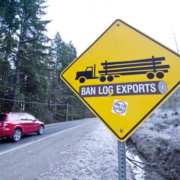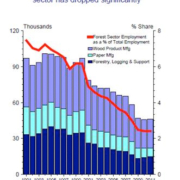“The Green, Liberal, and NDP platforms on old-growth logging and sustainable forestry can best be summarized as ‘The Good, the Bad, and the Wobbly’,” stated Ken Wu, Ancient Forest Alliance executive director. “The Greens have committed to ending logging of our endangered old-growth forests, the BC Liberals are still spinning their anti-environmental fairy tale that ‘old-growth forests are not disappearing’, and the NDP are trying to figure out how far they’ll go to protect old-growth forests but have not provided any details or made any strong commitments.”
On old-growth logging and sustainable forestry, the parties’ platforms are as follows:
The Green Party’s platform can be described as “Good”.
The Greens have committed to a science-based plan to fully protect BC’s old-growth forests in endangered regions, to reduce the unsustainable overcutting of second-growth forests with longer rotations and to phase-out clearcutting, and to increase the fee on raw log exports to support value-added processing of BC wood products. https://www.greenparty.bc.ca/forest_action_plan and https://www.greenparty.bc.ca/forestry
The BC Liberals’ platform can be described as “Bad”.
The BC Liberals maintain that old-growth forests are not disappearing, that raw log exports are necessary, and continue to support the status quo of large-scale old-growth liquidation. See this article in the Times Colonist.
The BC Liberals have been promoting misleading statistics for a decade where they’ve overinflated the amount of remaining old-growth forests by including vast tracts of stunted, non-commercial “bonsai” forests in bogs and at high altitudes in their statistics. “It’s like including your Monopoly money with your real money and then claiming to be a millionaire, so why stop spending?” Wu noted. “The BC Liberals have been the ‘Despoilers of Beautiful BC’ when it comes to supporting large-scale old-growth logging and unsustainable forestry across most of the province.”
The NDP’s platform platform can be described as “Wobbly” or “Vague”.
The NDP mention protecting “valuable old-growth forests” in their main platform (see page 42: https://www.bcndp.ca/files/BCNDP-Platform-2013-Web.pdf- Link no longer available), but don’t provide any key details like “how”, “how much”, “where”, and “when”. The party has not committed to ending old-growth logging in any region of BC, nor to a science-based old-growth protection plan for the province. The party says it aims to reduce raw log exports, but provides no details how except to “work with stakeholders”. During the election campaign, thousands of people have written emails and called NDP candidates (see https://www.BCForestMovement.com – Link no longer available) asking them to end logging of endangered old-growth forests. The NDP’s position has evolved from no mention of old-growth, sustainable forestry or the environment in their status quo Forestry Platform (April 15), to a brief mention of old-growth in their Main Platform (April 24), and in recent days increasing mention of saving old-growth forests in their various PR initiatives (but still lacking detailed, strong commitments).
“As the NDP are likely to be the next government, I sure hope they remember the 1990’s ‘War in the Woods’, and that they truly listen to the conservation movement and implement a science-based old-growth protection plan that will end endangered old-growth logging and ensure a sustainable, value-added, second-growth forest industry,” stated Ken Wu.
New maps of BC’s southern coast highlight the ecological crisis in BC’s forests due to old-growth logging. At least 74% of the original, productive old-growth forests have been logged, including at least 91% of the biggest, best old-growth stands (ie. the“classic” high productivity valley-bottom old-growth forests with the largest monumental trees most heavily visited by tourists and featured in photos). See the new maps and statistics at: https://16.52.162.165/ancient-forests/before-after-old-growth-maps/
Ancient forests are vital to sustain endangered species, tourism, the climate, clean water, wild salmon, and many First Nations cultures.
The BC Conservatives have made no mention in their platform or website about old-growth protection, sustainable forestry, or anything environment-related to forestry. About the only mention of forestry in their platform is a strange statement that “the BC Liberals have shown little enthusiasm for the development of British Columbia’s abundant natural resources.” “They must have a pretty scary platform on the environment if they think that,” Wu observed.
MORE BACKGROUND INFO:
How has the NDP’s Position Evolved on Old-Growth Forests?
– From 2006-2008 (Forestry Critic Bob Simpson) the party called for a “Provincial Old-Growth Plan for the Coast and Interior”. During this time, Simpson moved the party into a strong position in favour of protecting old-growth forests, but was ousted from the party a couple years later.
– In 2011 during Adrian Dix’s NDP party leadership bid, Dix had quickly followed the lead of his opponent, John Horgan, who was also vying for party leadership and who had made old-growth forest protection a key part of his platform. Dix soon followed, committing to: “Develop a long term strategy for old growth forests in the Province, including protection of specific areas that are facing immediate logging plans…” See point 4 under “Ecosystem Management” at: [Original article no longer available] . This commitment has since not been further developed, re-mentioned, or even officially adopted by the party.
– On April 15, 2013, the NDP’s Forestry Platform was launched (Forestry Critics Norm MacDonald and Bill Routley). There was no mention of old-growth forests, sustainability, or the environment. See: https://www.bcndp.ca/files/BG-BCNDP-130415_-_Forestry.pdf
– On April 22 (Earth Day), 2013, the NDP’s Environment Platform was launched. There was no mention of old-growth forests in the media release or in public. See: https://www.bcndp.ca/newsroom/dix-invests-green-projects-ends-carbon-credit-fund-and-reaffirms-opposition-enbridge
– On April 24, 2013, the NDP’s Main Platform was launched. The words “Protect significant ecological areas like wetlands, estuaries and valuable old-growth forests” were included in the Environment section. This was a recent step forward, but still vague without details. See page 42: https://www.bcndp.ca/files/BCNDP-Platform-2013-Web.pdf
Tracts of old-growth forests are regularly protected in BC each year through the implementation of regional land use plans that designate new Old-Growth Management Areas (OGMA’s), often in marginal old-growth stands with stunted trees – while at the same time larger areas of productive old-growth forests are logged.
Key questions about the NDP’s old-growth commitment include if it would be above and beyond the protection levels of current land use plans; if it would be a limited, ad-hoc approach on the party’s whim wherever they choose to or choose not to protect, or if would be a comprehensive, systematic protection plan across the province; if it would involve science-based conservation assessments that set old-growth protection/ restoration targets in each ecosystem and region of the province that must be met to minimize biodiversity loss; and if they would actually end old-growth logging in any regions deemed endangered by science.
“A crucial question is if the NDP’s old-growth protection commitment would exceed the inadequate protection levels of the status quo under the BC Liberals and restrict or fully end the logging of endangered old-growth forests in any regions of the province. Without further details, the NDP’s stance could very well be just a continuation of the unsustainable status quo. In fact, BC’s top industry insiders say it is,” stated Ken Wu.
The presidents of BC’s two largest old-growth logging industry associations, Rick Jeffrey of the Coast Forest Products Association (CFPA) and John Allen of the Council Of Forest Industries (COFI), have both stated that the NDP’s forestry platform represents the status quo, with little difference from the BC Liberal government’s policies. See “Parties’ Forestry Platforms Show Few Differences, Industry Insiders Say”: https://www.timescolonist.com/parties-forestry-platforms-show-few-differences-industry-insiders-say-1.111472 and “Global TV: Cathedral Grove and NDP on Forestry” https://www.youtube.com/watch?v=NOz232HDx3Y
See spectacular photos of our old-growth forests at: https://16.52.162.165/photos-media/.
See a recent ancient forest campaign video at: https://www.youtube.com/watch?v=z6YTizBF-jE

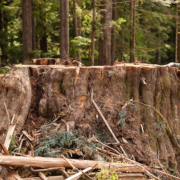
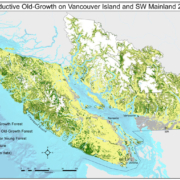
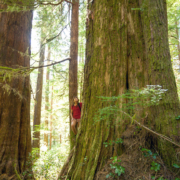
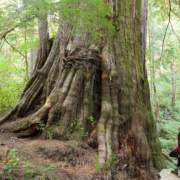
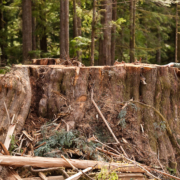
 Jane Sterk, Green: Yes. It is a policy of BC Greens that we stop all old-growth logging in B.C.
Jane Sterk, Green: Yes. It is a policy of BC Greens that we stop all old-growth logging in B.C. Carole James, NDP: The BC NDP is committed to protecting our province’s environment and coasts and will take measures to protect significant ecological areas including wetlands, estuaries and valuable old-growth forests.
Carole James, NDP: The BC NDP is committed to protecting our province’s environment and coasts and will take measures to protect significant ecological areas including wetlands, estuaries and valuable old-growth forests. Karen Bill, Liberal: Old-growth forests are not disappearing. There are more than 25 million hectares of old-growth forests in B.C. About 4.5 million hectares are fully protected, representing an area larger than Vancouver Island. Conserving old growth is an important part of long-term resource management. By law, forests that reflect the working definition of old growth must be retained in ecological units to meet biodiversity needs.
Karen Bill, Liberal: Old-growth forests are not disappearing. There are more than 25 million hectares of old-growth forests in B.C. About 4.5 million hectares are fully protected, representing an area larger than Vancouver Island. Conserving old growth is an important part of long-term resource management. By law, forests that reflect the working definition of old growth must be retained in ecological units to meet biodiversity needs. John Shaw, BC Communist Party: Yes, all regions of the province containing old-growth forests should be protected and maintained. The provincial government must ban raw log exports, and legislate the processing of timber locally for export as lumber or value-added products under public ownership and control.
John Shaw, BC Communist Party: Yes, all regions of the province containing old-growth forests should be protected and maintained. The provincial government must ban raw log exports, and legislate the processing of timber locally for export as lumber or value-added products under public ownership and control.